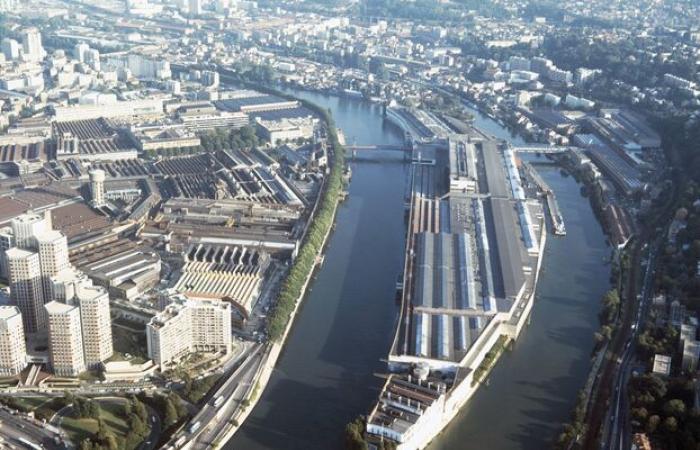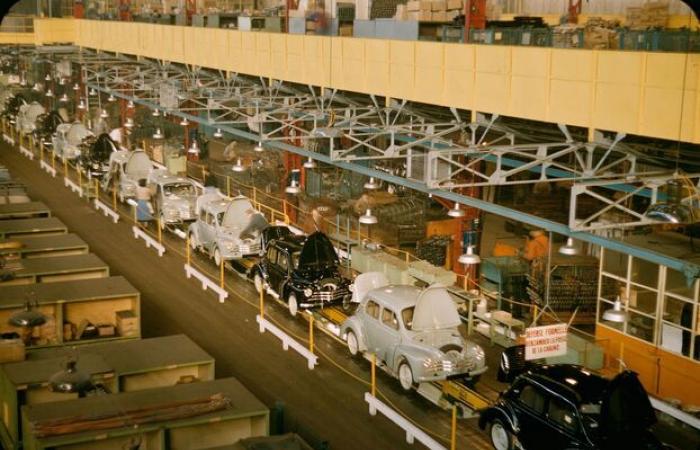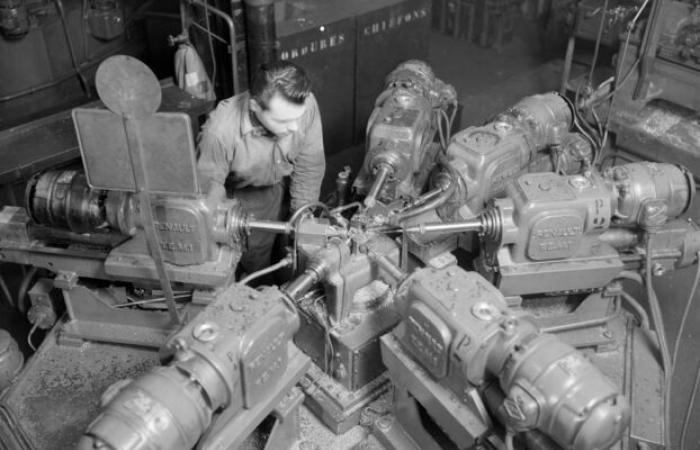Le Parisien and its editions, our anniversary meeting
Le Parisien is celebrating its eightieth anniversary this year. From 1960, our hitherto national title had its first departmental edition, in Oise. There are now nine of them, whose particularly rich news often has a national impact. We have chosen, for each department, a striking headline, of which we tell you behind the scenes.
On Friday March 27, 1992, the last car, a Super cinq, rolled off the lines at the Renault factory on Seguin Island, in Boulogne-Billancourt (Hauts-de-Seine). The following week, the Renault liner, the UB (Billancourt factory for freed people), was officially closed.
Le Parisien headlines “Billancourt in the scrapyard”. “The entrance is walled up, the doors are welded (…) The legendary Régie Renault factory now resembles an entrenched and deserted camp,” writes our journalist from the economy department, Joëlle Frasnetti, in the March 31 edition. Of the 3,900 workers, 2,900 are reclassified.
That day, the media were stationed in front of the gates of Avenue Émile-Zola, where Pierre Overney, far-left activist and former employee of the Régie, was killed by a security guard twenty years previously. It is Arezki Amazouz who reminds us of the details of this news item, a symbol of the violence of the social conflicts which have punctuated the history of Régie Renault.
“We returned our tools with permission to keep one”
The former OS (specialized worker) and president of the Association of former workers at the Renault Billancourt factory on Seguin Island (Atris) remembers these last days of March 1992 as if it were yesterday. “The workers passed each other on the esplanade of Seguin Island, in silence, with tears in their eyes. We returned our tools with permission to keep one, he recalls. We were given a watch, a duffel bag and a t-shirt printed with Seguin Island… Taken by so much emotion, the majority of people were unable to speak to journalists. »
The closure of the UB then draws the curtain on a century of history, which Le Parisien will summarize in a chronology entitled “The taxis of the Marne, the 4 CV… And the strikes”. For the newspaper and mainly the departmental edition of Hauts-de-Seine, the saga of this closure will last more than thirty years. “We have been covering all the events linked to this closure for several years already, because it did not happen overnight, there was a whole industrial and political context”, recalls Jacques Lallain, appointed head of the departmental edition in 1992.
An international political and economic context, of course, with the fall of the Berlin Wall and the rise of globalization, accompanied by relocations. But also a local context, which Le Parisien had already begun to decipher.
“From 1982, the right, with Balkany in Levallois, began to eat away at the red suburbs. In 1988, Pasqua became head of the departmental council and Sarkozy became mayor of Neuilly. All these people at the head of the 92 had the desire to establish themselves politically over the long term and to renew the working population with a population of executives closer to them,” says Jacques Lallain.
Closure, future of the site, soil pollution, recycling: each step has its own “paper”
Then comes the end of the Seguin Island chains. A truly “historic” moment. The 92 edition then follows all the progress of this closure, recorded in 1989. “It had an extremely strong symbolic charge, because it was the symbol of the automobile in France, that of the disappearance of an industrial world and a political era of rivalries between the communist world and the liberal world. »

Reporters of the time regularly met politicians, management of the Régie and unions, very powerful at Renault, in particular the CGT, which retained the absolute majority in its stronghold of Billancourt until the end.
The questions were numerous: what were we going to do with the employees, what was going to become of this immense industrial wasteland? Who from the department then chaired by Pasqua or from the city was going to finance the mixed economy company to buy the land from the State?
“There was also the big problem of soil quality, decontamination, moving machines, thousands of tons of steel,” adds Jacques Lallain. At the time, the recycling angle was secondary, it was more logistical, we knew that the Seine was going to be used and that there would be cutting. » At each stage its “paper”, as they say in the jargon.
“A world that has disappeared”
When the machines were still working, the journalist who later became general secretary of the editorial staff of Le Parisien had the opportunity to visit Seguin Island.
” It was modern times of Charlot. Heat, deafening noise, where the sheets were stamped to form them. Furnaces melted the metal, workers worked on the assembly line: people seated on a stool whose function was to place metal parts on a conveyor belt in front of them and check their conformity. They did this at crazy speed, all day long. There were a lot of people in overalls doing the 3 x 8s. This working atmosphere, with mainly men, who smoked, drank, ate snacks, and this banter, it’s a world that has disappeared. » Which Arezki Amazouz also testifies to: “We were a family. Relations were friendly and fraternal, with 53 nationalities rubbing shoulders. »

And while the OS repeated the same gesture every day, in the buildings of Le Parisien, based at the time in Saint-Ouen (Seine-Saint-Denis), the journalists also rubbed shoulders with the industrial world of the press. “We were working on typewriters, there was a crazy noise when everyone was typing around 5 or 6 p.m. We banged on these machines, we smoked and we drank a lot… There wasn’t a day when there wasn’t a pot,” recalls, a bit nostalgically, the former reporter from Le Parisien.
Once the paper was written, the sheet was stenographed to be sent to machines that made strips of paper. These strips were given to the editorial secretaries who pasted them on models with the paper photos. The models were then sent to the workshop where the page was composed with lead. All this was done in the same building with a significant division of labor but with “great proximity” between all the trades, remembers Jacques Lallain.









